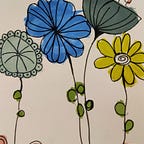What are wireframes? What are they used for? Why are they used?
In very basic words, wireframes are simple diagrams that use simple shapes to depict the placements and layouts, for an initial product concept. They help to visualize the design and mark placeholders for the numerous features you plan to add — a logo, a button, a text box, an image, a menu bar and the like.
Wireframes help bring thoughts to paper and add clarity and structure to ideas. They are essential to ensure the ideas are feasible, look okay in reality, and serve the purpose. The styling, colors, graphics are kept to a minimum.
Wireframes help to get a confirmation about the validity and requirement of the proposed task through the quick to create, easy designs (remember we just use placeholders).
Gaps if any, get called out at this stage, brain storming sessions can be had to make the design better and more suited to the requirements, and until the wireframe is approved and all aspects of workability and the ‘how to dos’ are answered, the project is not moved to the next stage. It is very crucial to get this step correct, and answer the core design issues.
Wireframes:
- Provide foundation for designers to get clarity on the requirements
- Use simple shapes to create easy designs to show only placeholders
- Only contain the most essential elements of the design
- Are created in black and white or in the grayscale color scheme
- Act as a reference point for functional specifications
- Are used as the basis for project documentation
- Get everyone on the same page
How to make wireframes?
There are many easy to use tools available specially for the purpose. Sketch is one example. A pen and paper is also an option :) for making a wireframe. Free tools have the most popular one by the name Figma.
It all depends on the requirement, the creativity and clarity about the product’s design, and creating a wireframe only helps to further understand the idea and plug the holes.
A very good and important step to include in the design and build process.
